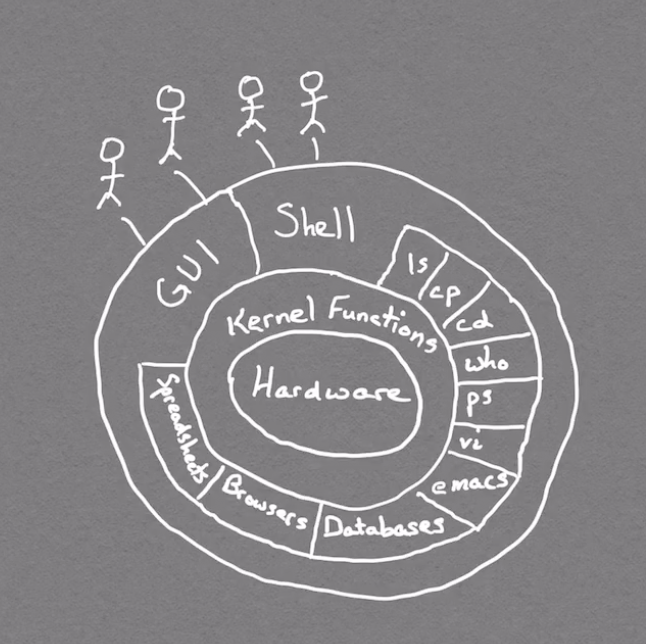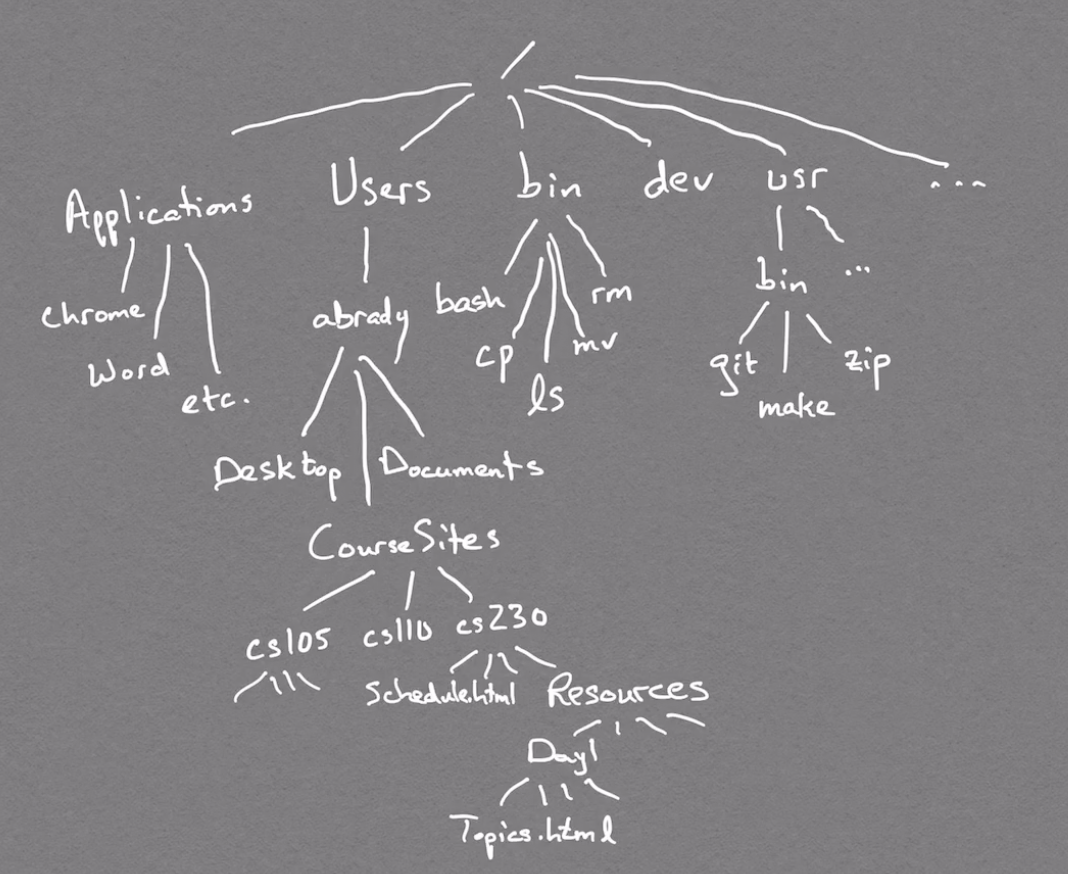
An operating system, such as Unix or Linux, has many different levels of
components. The most basic level, known as the kernel of the operating
system, is made up of a library of useful, built-in functions that programs
can use to interact with the system so that people don't have to write them
over and over. These functions cover tasks such as opening a file, reading
data from a file, writing to a file, starting a new program, etc. Built on
top of this is a whole collection of stand-alone programs that use those
functions, such as programs that let you copy a file (cp), or
list all the files in your directory (ls), or switch to a
different directory (cd). Or that tell you all the users
logged in to the computer (who), or all the processes that are
currently running (ps), or that provide basic file editing
functionality (such as vi and emacs).
Hierarchical File System Structure:

Sample Filenames:
Unix / Linux has a tree-like file system. The directory at the top of the
tree is called the "root directory" but it's name is just a slash (/).
Absolute pathnames always start at /:
/Applications/Chrome
/bin/bash
/usr/bin/git
/Users/abrady/CourseSites/cs230/schedule.html
If currently in /Users/abrady/CourseSites/cs230, we can use
relative pathnames:
schedule.html
Resources/Day1/Topics.html
Relative pathnames are always relative to the current working
directory.
Alyce Brady, Kalamazoo College

Sample Filenames:
Unix / Linux has a tree-like file system. The directory at the top of the tree is called the "root directory" but it's name is just a slash (/).
Absolute pathnames always start at /:
/Applications/Chrome /bin/bash /usr/bin/git /Users/abrady/CourseSites/cs230/schedule.html
If currently in /Users/abrady/CourseSites/cs230, we can use
relative pathnames:
schedule.html Resources/Day1/Topics.html
Relative pathnames are always relative to the current working directory.